Train Street is one of Hanoi’s most popular and unique attractions.
Created in the early 1900s during the French colonial period, the narrow railway line runs straight through a residential neighborhood in the Old Quarter, with houses, cafés, and shops just inches from the tracks.
Over the years, it has grown as a must-see spot for travelers, thanks to the dramatic sight of a train passing just feet away from where you can sip on a drink or snap photos.
In this post, I’ll recap what my experience visiting Hanoi Train Street was like, what to expect, and how to stay safe.
I’ll also include tips on how to access the area (especially since it’s sometimes restricted), the best times to visit, and how to enjoy the experience respectfully and responsibly.
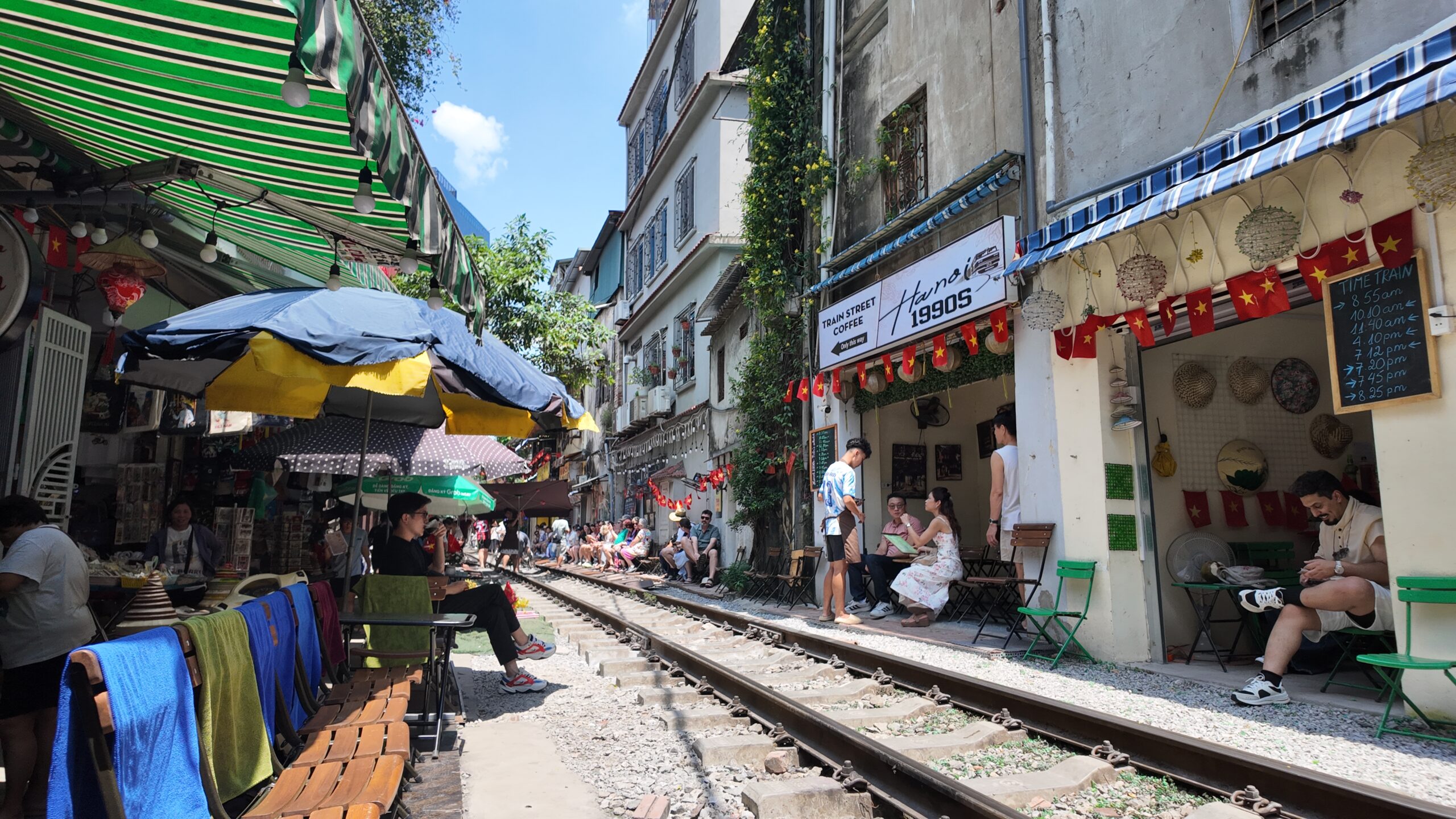
Table of Contents
ToggleThis blog post may contain affiliate links which means that if you book one of these activities using my link (which I know you will because you loved how helpful this blog post is *wink*I am going to receive a small commission at no additional cost to you. Thank you for supporting BCJ!
What is the Hanoi Train Street?
Train Street is a famous and uniquely narrow street in Hanoi, where an active railway track runs through a residential neighborhood in the Old Quarter.
It’s popular because it passes through several times a day and makes for an exciting experience and opportunity to capture visuals that you likely could not get elsewhere in the city, or many places in general.
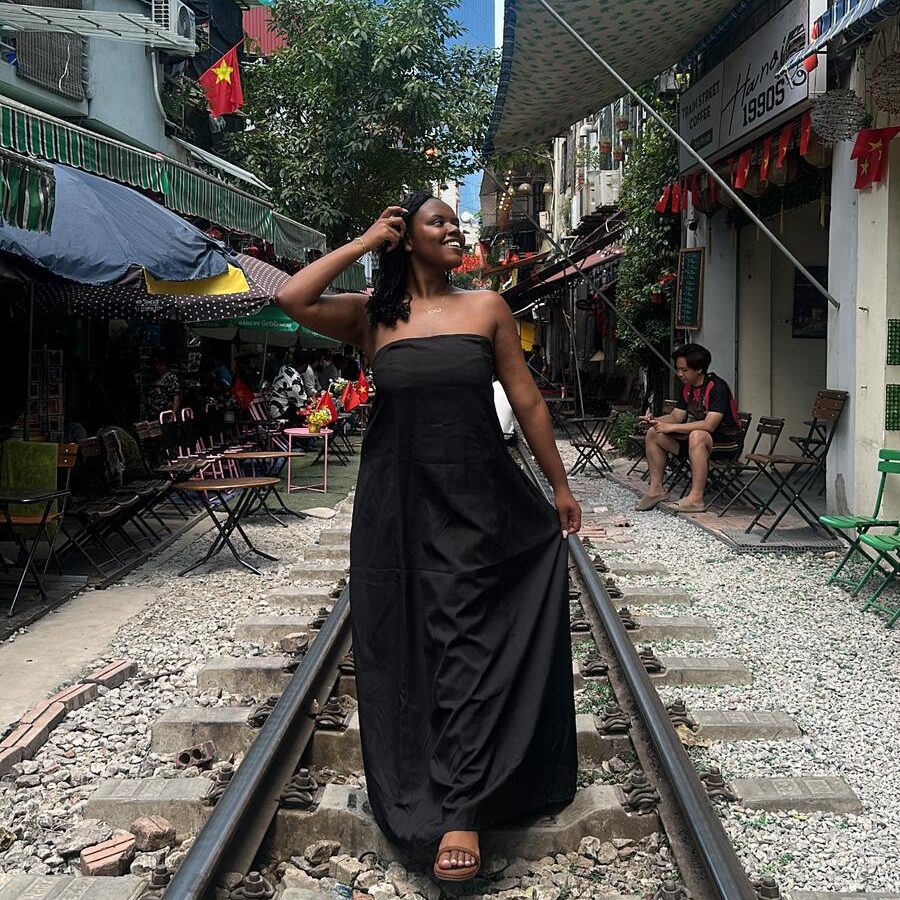
How to Visit/Find the Street
To make your way to the street, you can type in the name of one of the cafes in Grab or Google Maps, and your driver will bring you to the street.
I recommend using “Hanoi 1990 Cafe” as your landmark. It’s the largest cafe on Hanoi Train Street and is an easy way to find the street.
You can also type in “Train Street,” and you will know once you arrive.
You might need to walk behind or through some small shops to access the railway, as direct entrances can sometimes be blocked or hidden from the main road.

When Do the Trains Pass on Hanoi Train Street?
The most important aspect of visiting Hanoi Train Street is, of course, when you visit, and you can expect to see a train passing through.
Trains typically pass through Hanoi Train Street a few times a day, but the schedule can vary depending on the day of the week and any changes to the national railway timetable.
Hanoi Train Street Schedule (Subject to Change)
At the time I visited, these were the current times of the train:
- Morning: 8:55am, 10:10am, 11:40am
- Afternoon: 12:50pm, 4:10pm
- Night: 7:12pm, 7:20pm, 7:45pm, 8:50pm, 9:25pm, 9:50pm
Hanoi 1990s Cafe has a timeboard poster that was very helpful, allowing us to plan a return visit at a different time. It even included their contact information, which we could use to inquire about train times.
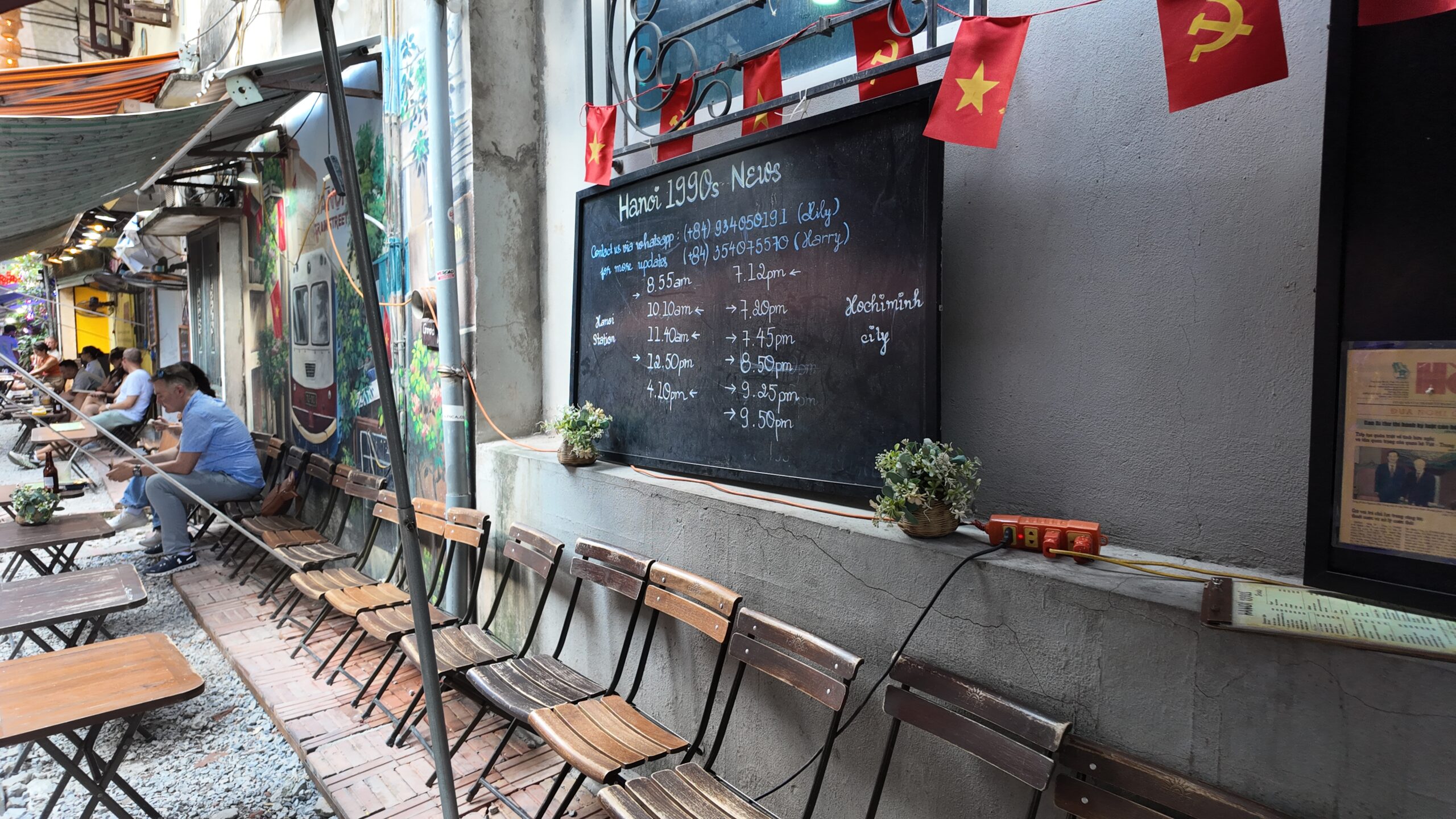
Planning Tip: The train schedule is reportedly updated monthly, so cafe owners recommend messaging them at least one day in advance to receive the latest information.
If you don’t get a response from anyone, you can also go to Train Street, see if the times are posted anywhere, and then plan accordingly from there.
What to Expect
Hanoi Train Street is lined with different cafes and souvenir shops. Once you arrive, you can walk along the railway and decide where you want to sit.
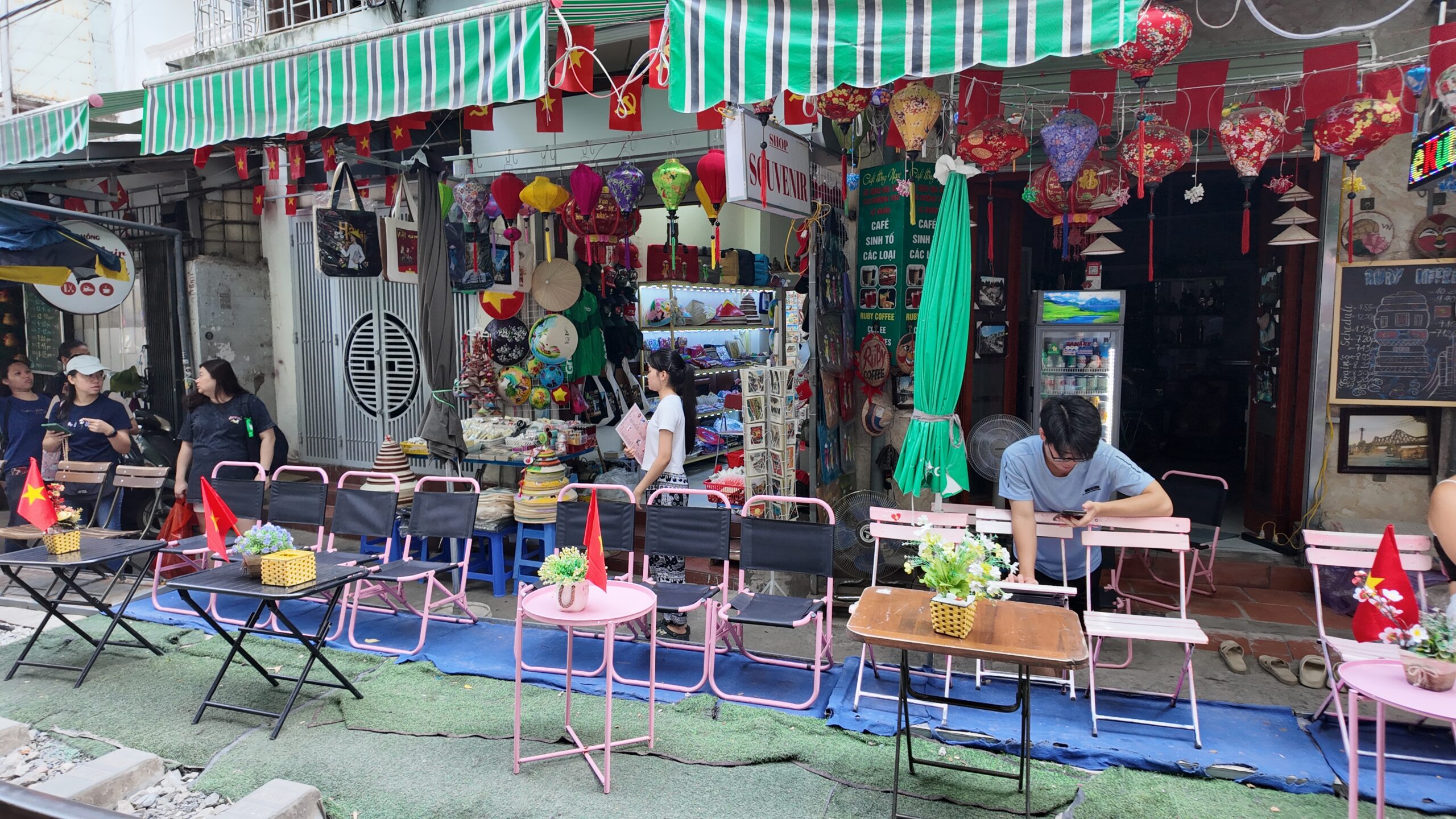
Choosing A Cafe
As you are walking, servers from different cafes will likely approach you and try to convince you to sit at a table that is part of their cafe.
This is a great opportunity to ask which direction the train will be coming from to help you decide if you want to sit on the left or right side of the tracks.
I would sit in a spot that feels comfortable to you and will give you what you’re looking for, whether it’s a certain video angle, more space, a stronger feeling from the train passing, etc.
The cafes are said to be primarily family-owned. Once you are seated, servers will approach you with a menu that will mainly be composed of drinks and maybe a few snack items like spring rolls.
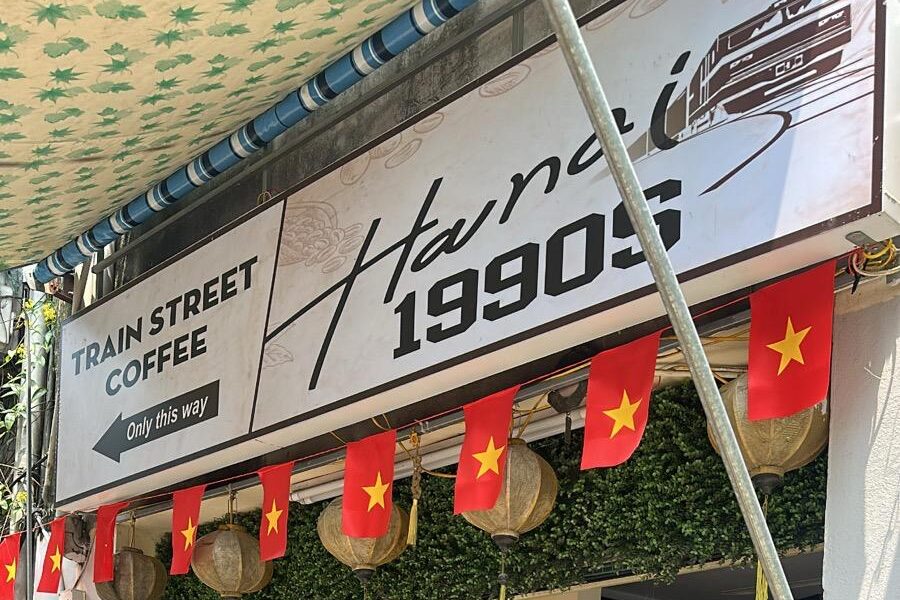
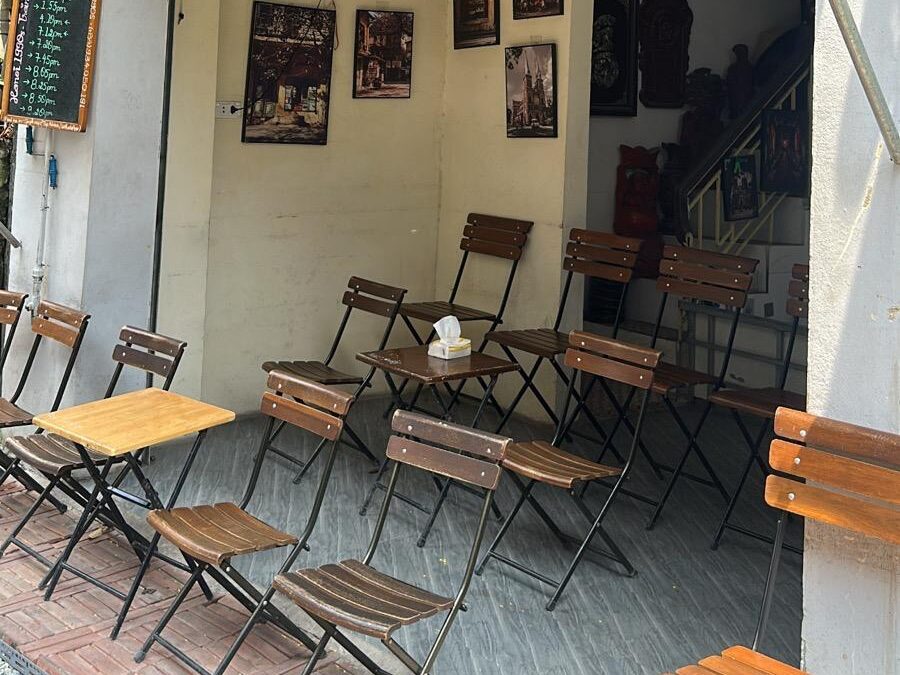
Is there a fee to visit Hanoi Train Street?
There is no entry fee to visit Hanoi Train Street.
Your payment is the purchase of food and drinks you choose from the cafe of your choice.
This is a great way to support local businesses and the cafe owners, so you should be sure to order.
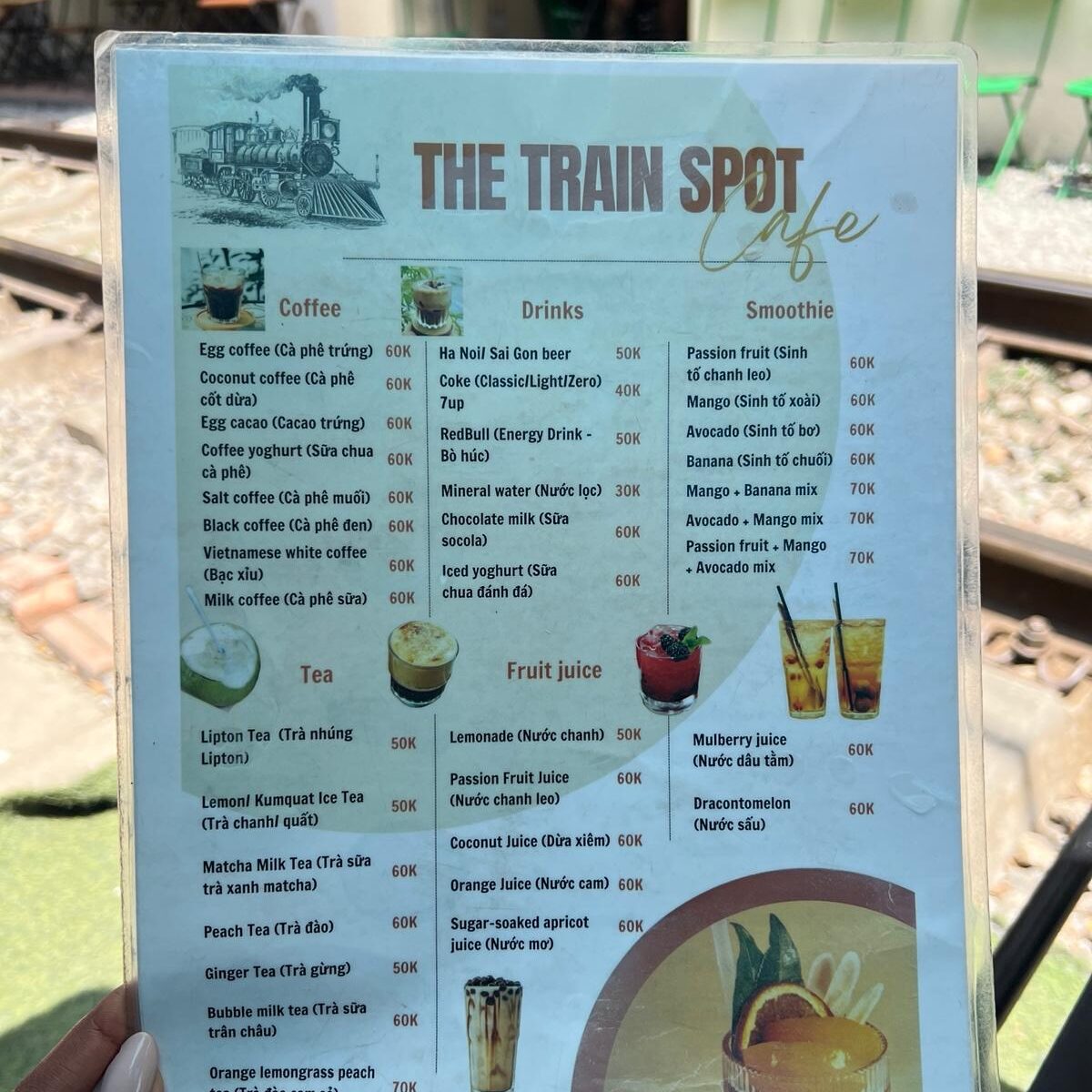
Preparing for the Train Passing
Fifteen minutes before the train passes, the staff members at each café will begin folding up the tables and chairs to move them out of the way so they don’t get hit or damaged by the train.
In addition to seating along the rail, you’ll also find that some cafés have seating inside the café for more of a back seat if you don’t wanna be too close to the rails.
There is a bell that will ring about five minutes before the train arrives.
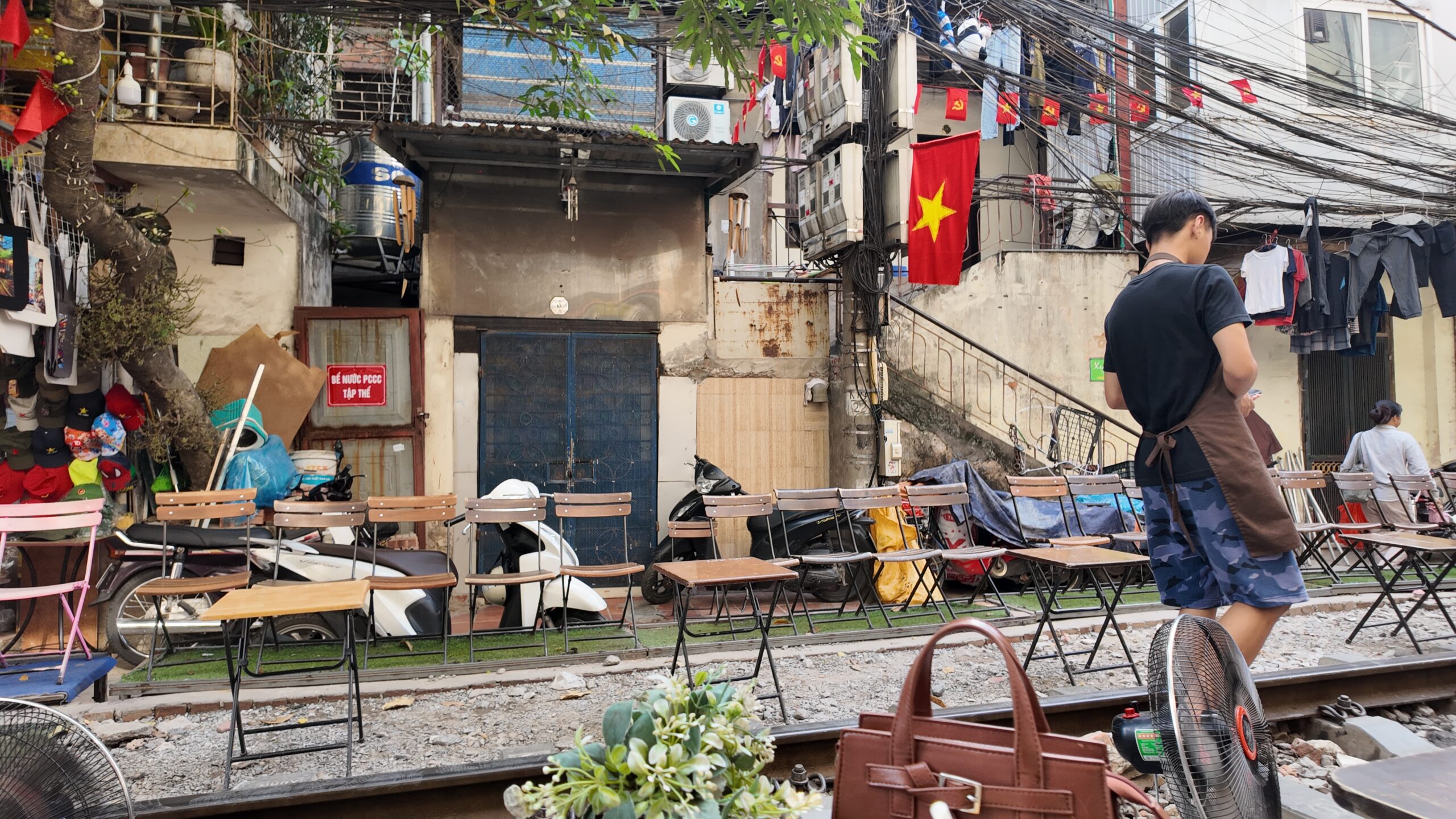
It’s impossible to miss as you’ll hear the train sound as well as many staff members telling you to get out of the way.
Listen to all of their instructions and guidance to stay safe.
My Experience at Hanoi Train Street
First Visit to the Hanoi Train Street
The first time we visited Hanoi Train Street, we actually booked a tour guide.
Our guide, Bach from Vietnam With Bee Travel, met us in front of our accommodation, and we took a taxi together to Train Street around 2 pm.
We arrived pretty early and waited over an hour and a half for the next train.
While that might sound like a long wait, it turned out to be a really relaxing and enjoyable experience. We had time to take photos, order drinks, and soak in the atmosphere before the big moment.
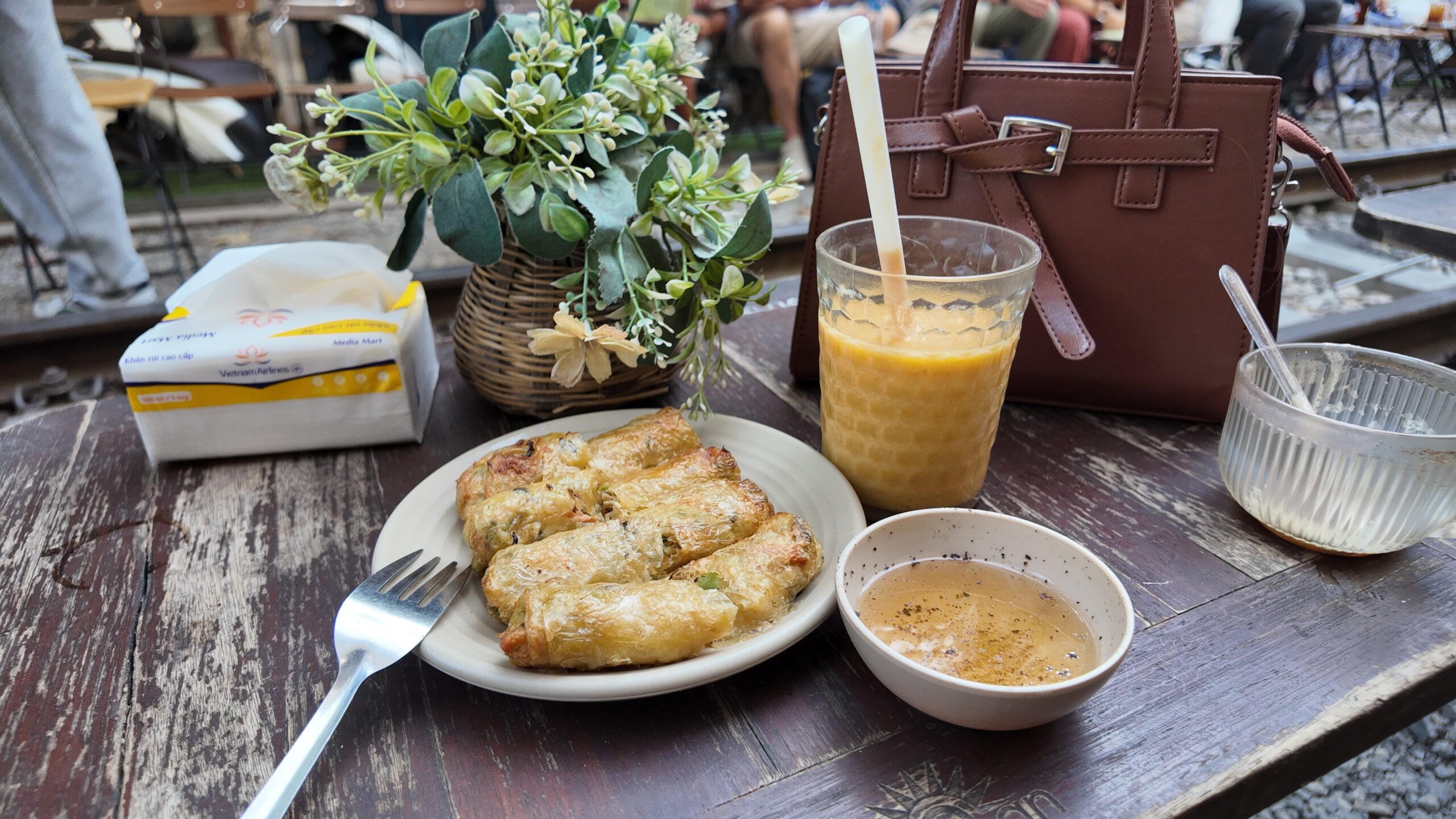
Bach also helped capture great photos and videos of us from different angles, shared interesting insights about life in Hanoi, and guided us to the best seats for an up-close (but safe) view of the train.
I originally booked a tour guide because when reading about the Train Street online before coming to Hanoi, it sounded overwhelming, like I would have to fight for a seat, etc., but it was far from that.
While you definitely don’t need a tour guide to visit Train Street, it’s a great option if you are traveling solo and want help capturing the moment. If you’re considering it, I can recommend booking with Bach, as our experience was great.

Second Visit to the Hanoi Train Street
The second time we visited Hanoi Train Street, I went the following morning based on the train schedule I had seen online.
It was very easy to find our way alone, and this time we sat at a different café, The Train Spot Café.
We arrived about 20 minutes before the train was scheduled to pass, which worked out fine since it was in the morning and less crowded.
However, if you’re planning to go in the afternoon or evening, I recommend arriving at least an hour early to secure a good spot, as it gets much busier later in the day.
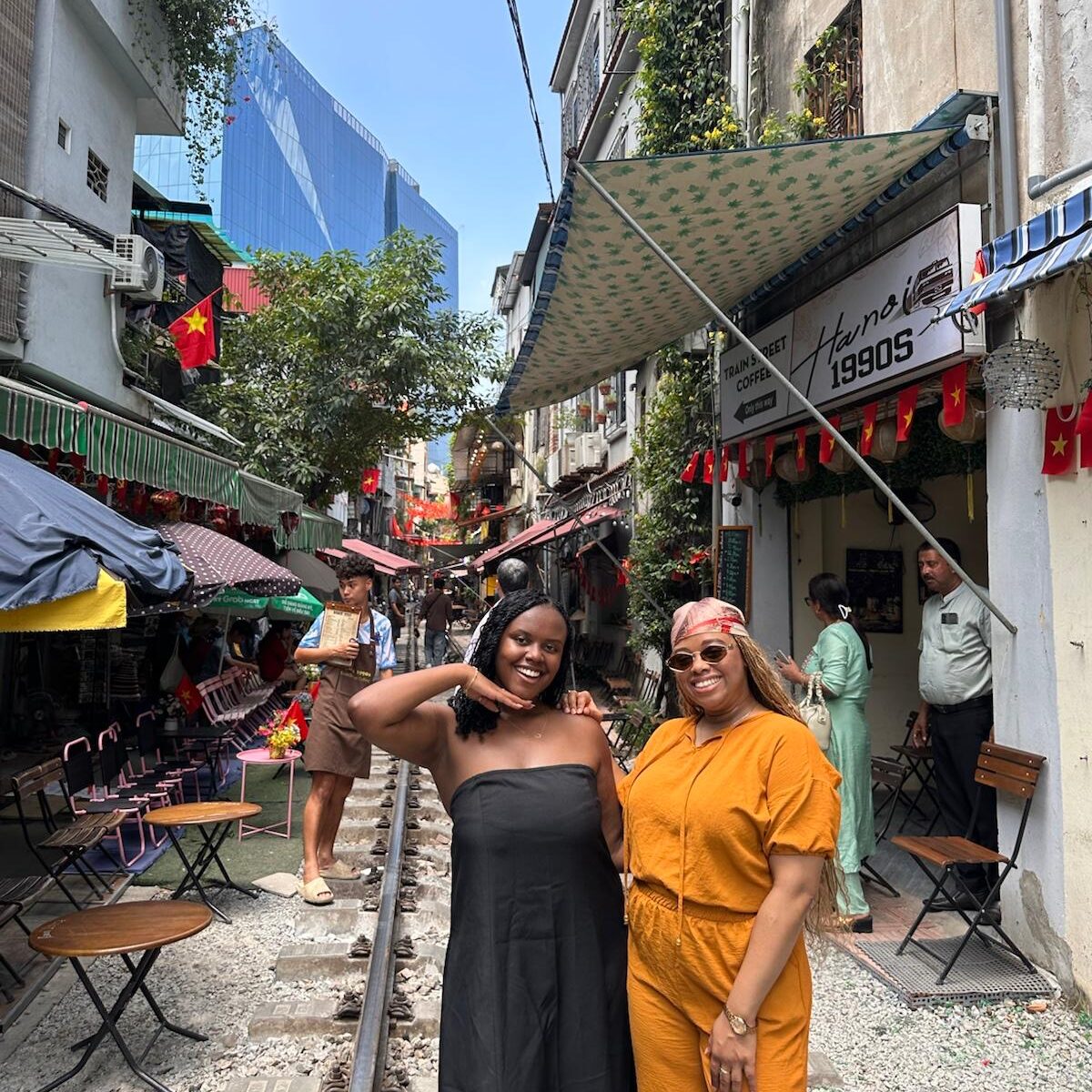
Frequently Asked Questions About Hanoi Train Street
Is the Hanoi Train Street closed?
As of now, Hanoi Train Street is partially restricted in certain areas, but it’s not entirely closed.
In recent years, local authorities have introduced safety measures due to overcrowding and concerns about tourists getting too close to the active railway. You’ll find plenty of articles online about how access has gone back and forth between being open and closed over time.
Depending on which side of the street you approach from, access to the tracks may be limited or even closed at times. However, when I visited, the south entrance near Hanoi 1990s Cafe was open and operating without any issues or restrictions.
When is the best time to visit?
The best time to visit is in the late afternoon or evening, when the weather is cooler and the experience is more comfortable.
It also tends to be livelier during this time, with more people around, which adds to the excitement and atmosphere.

Is it safe to visit Hanoi Train Street?
I was initially nervous about the safety of visiting Train Street, but once I was there, I actually felt very safe.
During my first visit, the train came through and seemed much closer than I expected, but everything was fine.
The most important thing to remember is to follow the directions and safety guidelines given by the locals and café owners.
They know the timing and conditions best, as they see the trains pass daily and understand how most accidents happen. Listening to them ensures a safe and enjoyable experience.















